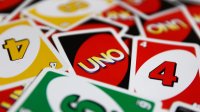Using Board Games to Teach Math to Young Children
Playing board and card games can improve number sense among children as young as 3—and it’s fun!
As a longtime math educator, I can be a little insistent when it comes to ensuring that my own grandchildren are mastering numeracy concepts and developing related skills at home. But I’ve learned from experience that suggesting we practice math will just elicit eye rolls. Instead, I frequently suggest that we play board games. The kids love that idea, and recent research confirms that it’s a great way to get better at math.
A recent study found that playing board games improves number recognition, counting, basic operations, and number comprehension among children as young as 3. Students can learn skills ranging from basic tenets such as identifying numbers and counting “how many” to complex ideas for strategizing how to achieve certain outcomes.
Games for Pre-K To Sixth grade
There are many games that can be used for different math topics in multiple grades, to create fun learning environments and improve math skills. Teachers have a lot of favorites when it comes to board and card games, but some of those that get the thumbs-up from educators include the following.
Qwirkle (or Set for upper grades): A matching game in which students have to match colors or shapes. Players practice spatial reasoning and identifying and classifying characteristics (color and shapes).
Blokus: A game in which players put shapes on a board according to color. It’s great for developing logic skills and spatial perception.
Yahtzee: The object of the game is to roll five dice in order to score combinations and get the highest total score. This is an excellent game for grades three and up to practice fluency with number combinations and to explore deeper understanding of basic operations.
Battleship: Players have to guess the positions of an opponent’s ships on a grid. Students can work on the coordinate plane, spatial relationships, and logic skills.
The Game of Life: A classic board game that offers lessons on money and budgeting and creates opportunities to practice basic math operations.
Uno: A matching card game that can help with number recognition.
Dominoes: This is also great for practicing number recognition and counting.
In the classroom, teachers don’t always need a game board in order to enhance learning goals. Think of the times you might have drawn a tic-tac-toe grid on a napkin to pass the time and play while waiting for food in a restaurant. Similarly, Battleship can easily be played on graph paper.
Teaching Strategies
Finding time to squeeze board games into the school day can be tricky, but given how much fun they can be, and the latest evidence that they can boost learning, it makes sense to try to try to fit them in. Below are some suggestions for weaving them into your instruction.
You can leverage hidden moments of time in the school day to provide access. Some teachers use rainy days as an opportunity to pull out board games during indoor recess. Others like to make them available during lunch or before everyone settles down in the morning. Still others use them when initial assigned work is completed.
Use and adapt board games to fit teaching objectives for a particular grade level or unit. You can use Chutes and Ladders moves on the game board in first grade to record the number of spaces moved and the total number of spaces when students are learning to work with equations. Introduce finding coordinates in a plane in fifth grade with a classwide version of the game Battleship. Then let students play in pairs, placing and locating ships. This is an activity where you can easily transition from the game board to graph paper.
Ask guiding questions that promote the learning objectives. What are you trying to achieve with the game? You can be ready orally to guide the activity, or you can have questions printed on cards if students are working independently. Use an exit-ticket format for informal assessment. When developing opportunities for a student to revisit a skill for additional learning or to start exploring a new concept, make board games available in a center. For example, Yahtzee would be a possible challenge game for advanced second- and third-grade students to explore number combinations.
Added Benefits of board games
Benefits from board games in the classroom go beyond achievement. The motivation from games often increases time on task and curiosity about skills that enhance play. Students strive to know more because it improves performance. The benefits can spill over into other areas as well. I recall an elementary school student named John, who previously avoided math, hurrying to finish seatwork to participate in a center with math games. Since seatwork was checked for accuracy before they were allowed to play math games, his other work improved as he practiced math skills.
Children also learn from other children and the play of the game, analyzing their peers’ strategies and tactics. The teacher can further promote the interaction and exchange by asking critical questions of the players: How did you determine your first move? What roadblocks did you encounter, and how did you handle those?
How young is Too young?
Board games are used infrequently in preschool settings, but I think it’s never too early to start to blend fun and learning this way. When I was playing Qwirkle with my grandchildren, the 2-year old on the sidelines was the first to pick up the yellow piece when it was called. No one realized he was absorbing all the information as he watched his older sibling play.
So, as this school year gets underway, consider stocking up on board games—I like to pick them up at yard sales, and you can always see if families have extras—and think about how you might incorporate them in your classroom.
